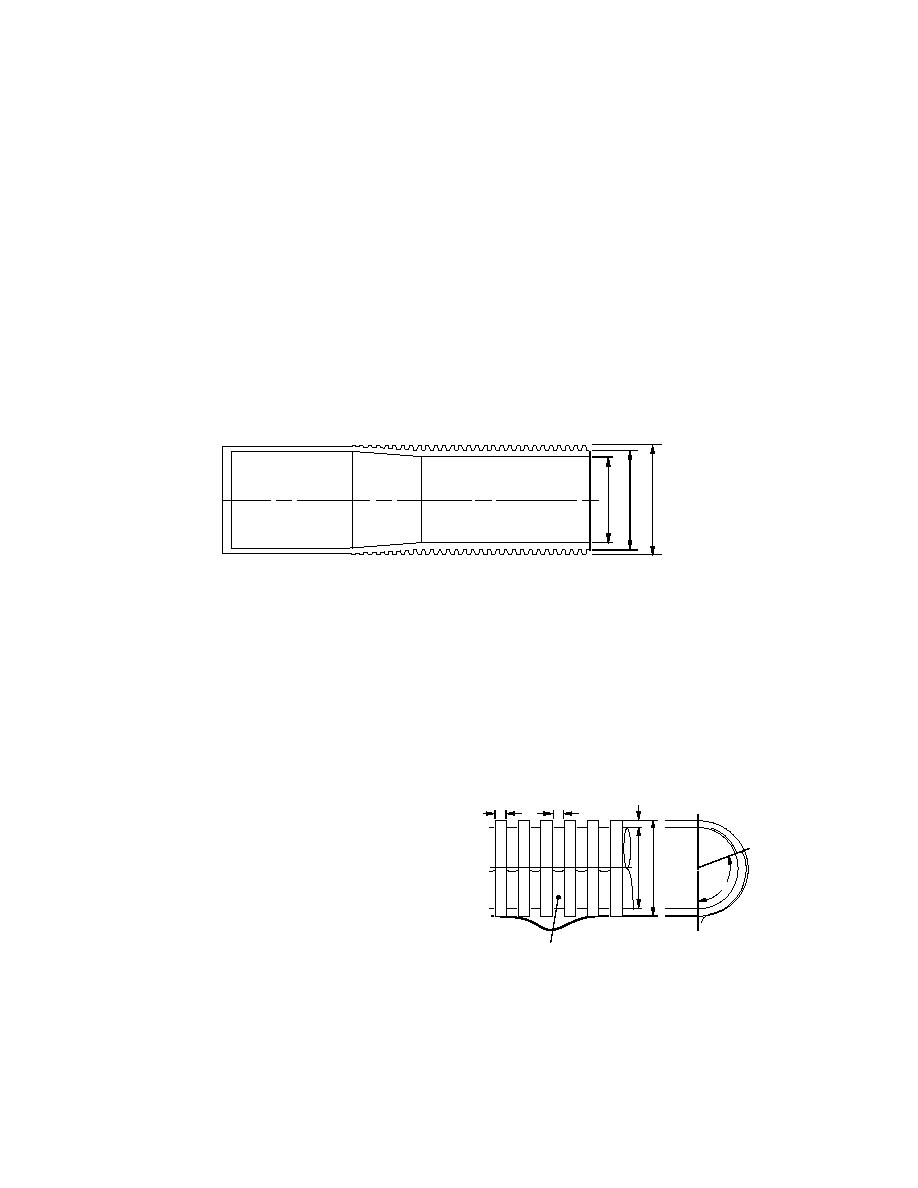
HORIZONTAL INTEGRAL-FIN TUBES
The use of horizontal, low profile integral-fin tubes (Fig. 19) to enhance condensation is
quite common in the design of surface condensers in the refrigeration and "process"
industries. These tubes have, therefore, been studied extensively for the past fifty years.
An excellent review of the pertinent literature has been provided by Marto (1988). The
recently published book by Webb (1994) also contains a substantial discussion on the
analysis and design of integral-fin tubes.
Commercial integral-fin tubes are made of different materials (aluminum, stainless
steel, titanium, copper and its alloys, etc.) and are available in different densities ranging
from 4331675 fins/m or 1140 fins/in. Although the standard integral-fin design pro-
vides a significant enhancement in condensation over plain tubes, more advanced designs
such as Hitachi Thermoexcel-C, Wieland GEWA-SC, Wolverine Turbo-C, and Sumitomo
Tred-26D improve the performance still further. These designs use a saw-toothed fin
shape.
Since the topic of condensation on integral-fin tubes has been comprehensively cov-
ered by Marto (1988) and Webb (1994), the following sections will highlight only the
important results.
di
dr
do
Figure 19. Horizontal integral-fin tube.
Condensate flooding
When a high-surface-tension fluid such as steam condenses on a horizontal finned
tube, the surface tension (capillary) force causes the condensate to be retained between the
fins on the lower side of the tube as shown in Figure 20a. This phenomenon, which is
known as condensate flooding, increases the thermal resistance in the flooded region,
thereby adversely affecting the performance of the tube.
Katz et al. (1946) were the first to investigate the phenomenon of liquid retention in
horizontal finned tubes. Their measurements, which were performed under static (no
condensation) conditions, revealed that in ex-
e
w
s
treme cases, flooding could cover the entire
surface of the tube. Rudy and Webb (1981)
measured retention of refrigerant R-11, n-pen-
tane, and water in tubes of three different den-
d r do
β
sities (748, 1024 and 1378 fins/m). For the tube
with 1024 fins/m, they found that R-11, n-
pentane and water flooded 26, 42 and 100 %
of the tube circumference, respectively. They
Retained
Condensate
also found that flooding under dynamic (con-
(a)
(b)
densation) conditions was only slightly dif-
ferent from that under static (no condensa- Figure 20. Condensate flooding on a hori-
tion) conditions. The same conclusion was zontal integral-fin tube.
30




 Previous Page
Previous Page
